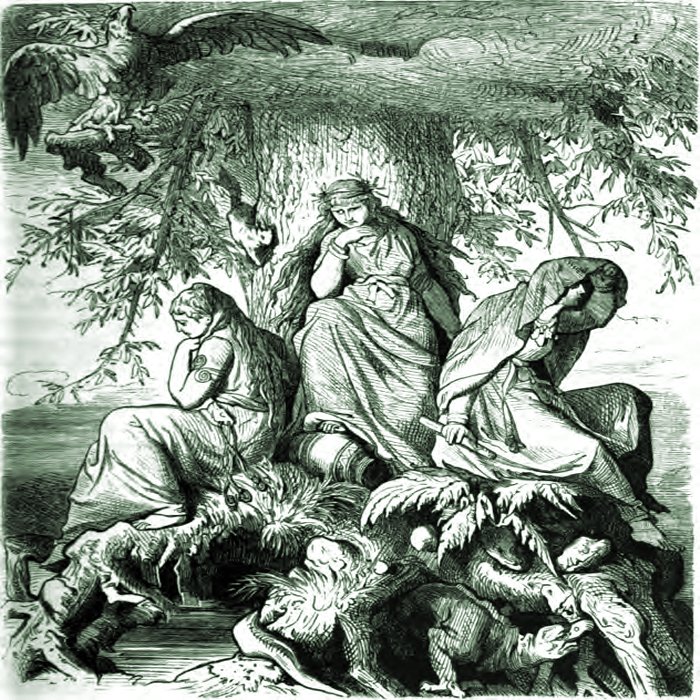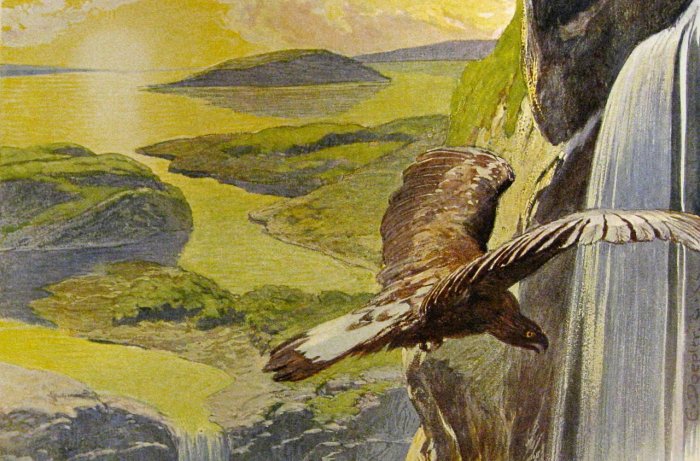Andlang – Spiritual Heaven And Shelter For The Dead After Ragnarok In Norse Mythology
Ellen Lloyd - AncientPages.com - The concept of life after death is often mentioned in Norse mythology, and there are several stories about the journeys of the dead and souls in Norse Sagas.
Andlang offered shelter for those who died during or after Ragnarok. Credit: Public Domain
The afterlife is interesting because it reflects some of the deepest beliefs of the Norse people. For example, the Vikings were convinced that if they died as heroes in a battle, they would be granted access to Valhalla, where God Odin ruled.
Valhalla was a reward for the most challenging struggles, wounds, and, finally, death. Knowing you would enjoy this gigantic and majestic chamber of the fallen heroes, warriors, and mighty chiefs motivated Vikings to become fierce warriors, and they certainly didn't fear death.
As the leader of the dead, God Odin is often mentioned as the one responsible for the souls of the deceased. The Norse deity Odin can be regarded as a counterpart of the Roman Mercury Psychopompus. As a personification of the wind, Odin uses his wings to carry disembodied souls when they leave the mortal sphere.
The Norns Urðr, Verðandi, and Skuld under the world oak Yggdrasil (1882) by Ludwig Burger (1825-1884). - Wägner, Wilhelm. 1882. Nordisch-germanische Götter und Helden. Otto Spamer, Leipzig & Berlin. Page 231.
One of the most critical events that gods, humans, and all living creatures must face and deal with is Ragnarok, an inevitable doomsday that cannot be stopped. Ragnarok is the doom of the gods and an apocalyptic record of the coming comet that will damage the Earth.
The concept of fate dominates Norse mythology, and to the Norse people, fate was a fact of life that could not be avoided or changed. The Norns were goddesses who ruled people's fates and determined the destinies and lifespans of individuals.
Described in the Eddas (1250), a collection of Old Norse poems, Ragnarok will be a horrifying period when life on our planet will perish. People must be prepared for massive earthquakes, fire, and water, with steam and flames reaching the high heavens.
Fenrir, the most infamous of all creatures in Norse mythology, plays an essential role during Ragnarok. This giant monster wolf will kill God Odin and bring chaos to the world.
The new world that rises after Ragnarök, as described in Völuspá (depiction by Emil Doepler). Emil Doepler - Doepler, Emil. ca. 1905. Walhall, die Götterwelt der Germanen. Martin Oldenbourg, Berlin. Page 58. Photographed and cropped by user: Haukurth - Public Domain
Needless to say, like all other doomsday prophecies, Ragnarok offers a pessimistic view of the future. Death, misery, and catastrophes will rule the Earth. Those few who survive will be wishing they died instead.
Snorri Sturluson (1179 – 1241), an Icelandic poet, historian, and politician who wrote the Prose Edda and the Heimskringla, described the existence of nine heavens in his works, similar to the mysterious nine worlds of Yggdrasil – the sacred tree of life in Norse mythology.
According to Snorri, Andlang will be a shelter for the dead after Ragnarok.
Andlang is spiritual heaven where the souls of the dead can gather during and after the destruction of Ragnarok. It is the second of three heavens in the cosmology of his work Gylfaginning which deals with Norse cosmology concepts and the creation and destruction of the world of the Norse gods.
It is above Asgard, the realm of the gods, and below a higher Heaven, Vidblain.
In Gylfaginning, Snorri writes: "Thus says the Prophecy of the Vala:
A hall I know, standing
Than the sun fairer,
Than gold better,
Gimle by name.
There shall good
People dwell,
And forever
Delights enjoy.
Then said Gangleri: Who guards this palace when Surt's fire burns up heaven and Earth? Har answered: It is said that to the south and above this heaven is another heaven, which is called Andlang.
But there is a third, above these and called Vidblain. In this heaven, we believe this mansion (Gimle) to be situated; but we deem that the light elves alone dwell in it now.
While researching the subject of Andlang, we face a problem. No Norse texts mention this place, and Anlang is also never described in Norse runes.
Was Andlang just an invention of Snorri? Scholars made attempts to interpret the name and suggest Andlang could mean "long-" or "far-breathing" and "limitless aether."
Philologist Rudolf Simek who translated many Norse Sagas into German found a connection between Andlang and the Coelus Spiritualis, the "spiritual heaven" in the original Latin version of the Elucidarius.
Still, without finding more sources mentioning Andlang, it's impossible to determine the nature of this heavenly realm.
Written by Ellen Lloyd – AncientPages.com
Updated on November 28, 2022
Copyright © AncientPages.com All rights reserved. This material may not be published, broadcast, rewritten or redistributed in whole or part without the express written permission of AncientPages.com
More From Ancient Pages
-
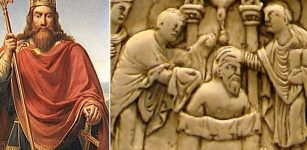 What Was Lex Salica?
Ancient History Facts | Dec 13, 2017
What Was Lex Salica?
Ancient History Facts | Dec 13, 2017 -
 Could Vancouver Island’s Hepburn Stone Be 15,000 Years Old?
Artifacts | Feb 20, 2021
Could Vancouver Island’s Hepburn Stone Be 15,000 Years Old?
Artifacts | Feb 20, 2021 -
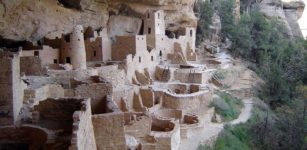 Sophisticated Masonry In Anasazi Dwelling Ruins At Mesa Verde National Park, Colorado, USA
Civilizations | Aug 11, 2015
Sophisticated Masonry In Anasazi Dwelling Ruins At Mesa Verde National Park, Colorado, USA
Civilizations | Aug 11, 2015 -
 Millennia Old Extremely Complex Object Of Unknown Origin
Ancient Technology | Jul 8, 2020
Millennia Old Extremely Complex Object Of Unknown Origin
Ancient Technology | Jul 8, 2020 -
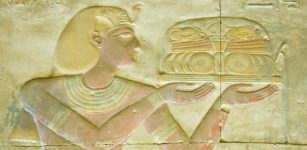 Table Manners And First Code Of Correct Behavior Were Introduced In Egypt 2,500 B.C. By Ptahhotep
Ancient History Facts | Oct 26, 2020
Table Manners And First Code Of Correct Behavior Were Introduced In Egypt 2,500 B.C. By Ptahhotep
Ancient History Facts | Oct 26, 2020 -
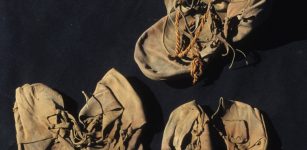 Unsolved Ancient Mystery: Why Were These Foreign Shoes Hidden In A Temple?
Archaeology | Mar 29, 2014
Unsolved Ancient Mystery: Why Were These Foreign Shoes Hidden In A Temple?
Archaeology | Mar 29, 2014 -
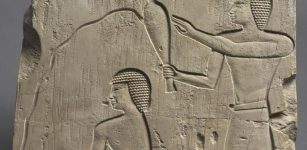 Daily Life Of Priests And Priestesses In Ancient Egypt
Ancient History Facts | Apr 5, 2018
Daily Life Of Priests And Priestesses In Ancient Egypt
Ancient History Facts | Apr 5, 2018 -
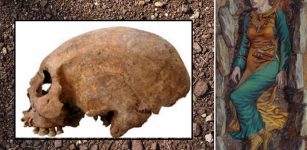 Unusual Viking Women With Elongated Heads On Gotland, Sweden
Featured Stories | Mar 28, 2024
Unusual Viking Women With Elongated Heads On Gotland, Sweden
Featured Stories | Mar 28, 2024 -
 Dragon’s Head – One Of The Most Famous Viking Symbols Discovered At Birka Ancient Excavation Site
Ancient Symbols | May 19, 2015
Dragon’s Head – One Of The Most Famous Viking Symbols Discovered At Birka Ancient Excavation Site
Ancient Symbols | May 19, 2015 -
 What Happened To The Homo Sapiens In The Thar Desert When They Encountered The Indian Monsoon System
Archaeology | Oct 5, 2021
What Happened To The Homo Sapiens In The Thar Desert When They Encountered The Indian Monsoon System
Archaeology | Oct 5, 2021 -
 During Tough Times Ancient ‘Tourists’ Sought Solace In Florida Oyster Feasts
Archaeology | May 4, 2020
During Tough Times Ancient ‘Tourists’ Sought Solace In Florida Oyster Feasts
Archaeology | May 4, 2020 -
 Brown Hares And Chickens Were Seen As Gods Not Food In Iron Age Britain
Archaeology | Apr 12, 2020
Brown Hares And Chickens Were Seen As Gods Not Food In Iron Age Britain
Archaeology | Apr 12, 2020 -
 Early North Americans Much More Diverse Than Previously Believed
Archaeology | Jan 30, 2020
Early North Americans Much More Diverse Than Previously Believed
Archaeology | Jan 30, 2020 -
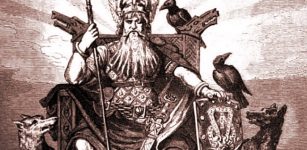 Geri And Freki: Two Wolves ‘Greedy’ And ‘Ravenous’ Were Loyal Companions Of Odin In Norse Beliefs
Featured Stories | Feb 8, 2019
Geri And Freki: Two Wolves ‘Greedy’ And ‘Ravenous’ Were Loyal Companions Of Odin In Norse Beliefs
Featured Stories | Feb 8, 2019 -
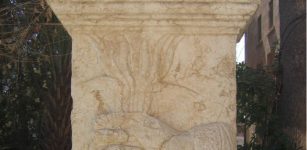 Mystery Of The Anonymous God Of Palmyra Finally Solved By Scientists
Archaeology | Jun 21, 2022
Mystery Of The Anonymous God Of Palmyra Finally Solved By Scientists
Archaeology | Jun 21, 2022 -
 Louhi – Witch Goddess Of The North And The Magical Artifact Sampo In Finnish Mythology
Featured Stories | Sep 21, 2017
Louhi – Witch Goddess Of The North And The Magical Artifact Sampo In Finnish Mythology
Featured Stories | Sep 21, 2017 -
 Facial Reconstruction Of 3.8-Million-Year-Old Skull Shows What Our Ancestors Really Looked Like
Archaeology | Dec 29, 2022
Facial Reconstruction Of 3.8-Million-Year-Old Skull Shows What Our Ancestors Really Looked Like
Archaeology | Dec 29, 2022 -
 One Of Europe’s Most Ancient Domestic Dogs Lived In The Basque Country 17,000 Years Ago
Archaeology | Nov 29, 2022
One Of Europe’s Most Ancient Domestic Dogs Lived In The Basque Country 17,000 Years Ago
Archaeology | Nov 29, 2022 -
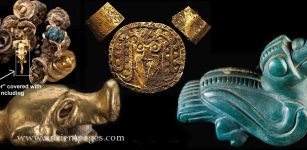 Mysterious Golden Lords Of Panama
Artifacts | Aug 23, 2018
Mysterious Golden Lords Of Panama
Artifacts | Aug 23, 2018 -
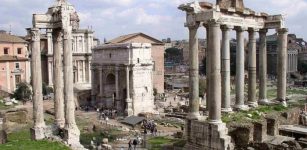 Mystery Of Ancient Roman Concrete That Still Stands Strong – Has A 2,000-Year-Old Engineering Puzzle Been Solved?
Ancient Technology | Jul 5, 2017
Mystery Of Ancient Roman Concrete That Still Stands Strong – Has A 2,000-Year-Old Engineering Puzzle Been Solved?
Ancient Technology | Jul 5, 2017


